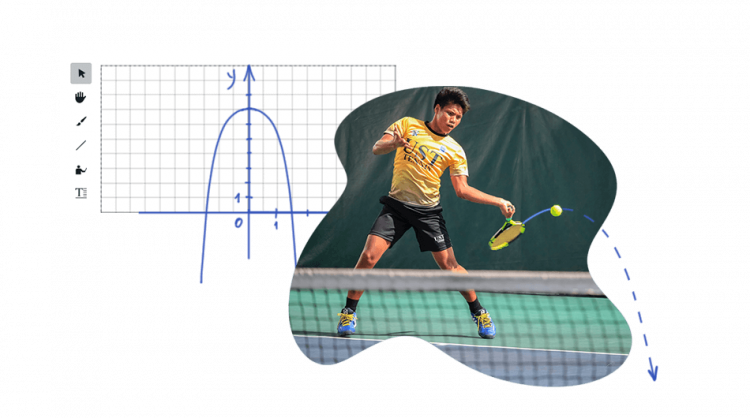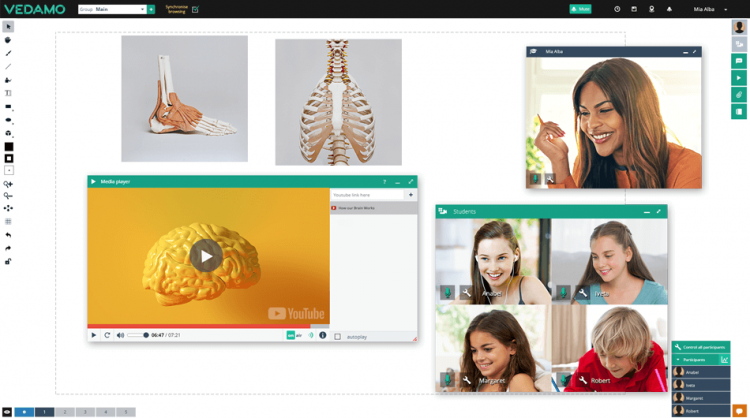The most important thing a teacher must convey to pupils is knowledge. This task, however, often ends up being quite difficult due to distractions or a lack of motivation on the part of the students in the classroom. Lecturers in the virtual classroom also face some challenges; specifically, how they can improve the relationships with their students and which successful strategies they can use to improve their pupils’ motivation levels.
After understanding the essence of motivation and the reasons leading to its decline, it is of upmost importance to outline the options that a teacher has at their disposal in order to boost student engagement during class. The process of generating motivation can be divided in four basic groups.
- First – the connection that a teacher has with their pupils, which will be thoroughly examined in this article.
- Second – the ways in which a teacher conducts the class and the teaching strategies applied in the virtual classroom.
- Third – the way the students address the subject and the way they develop and use study strategies and habits.
- Fourth – the future benefits from the subject and its value in the development of students as professionals.
When looking deeper into the bond created during the learning process between teacher and pupil, it is clear that it has an inevitable impact on the process itself. The kind of effect greatly depends on the amount of effort put in by the teacher in several directions.
Communication

Both the verbal and nonverbal communication of the teacher must convey respect towards the students. They are all unique individuals and must be treated as such. If and when the pupils recognize a lack of respect, they tend to become demotivated more easily and reciprocate a similar attitude. Respectful behavior from the teacher increases the motivation to attend class, as well as prepare, participate, and ask for help. One of the first and easiest ways to show students that they are being recognized as individuals is for a teacher to learn their names. In the virtual classroom, lecturers are aided by technology – they have the names of all of the students on the screen and can use them as a cue. Therefore, one of the most important steps in creating motivation is mutual respect.
Interest
A substantial part of this individual acknowledgement consists of the efforts of the teacher to try and get to know their students better. It is important to try to show interest in both their academic and personal lives (to a reasonable degree, of course). A knowledge of their hobbies and study preferences can aid the lecturer to better relate the subject to the students’ lives and thus increase their motivation levels. “[…] well-constructed courses that tap into issues that are important to students (e.g., The History of Rock ‘n’ Roll, or Philosophy and the Matrix [a popular film]) can capitalize on students’ motivation without sacrificing intellectual or disciplinary rigor.” (Eberly Center “Students Lack Interest or Motivation”.

Passion
Most students find it very motivating when a teacher sets a personal example. Relating to the subject helps makes it more interesting and fascinating. A teacher’s enthusiasm for the subject can be contagious. It can also provide encouragement to students and raise their curiosity. Thus, students may find some deeper meaning or overlooked value in the subject that could further engage them.
Virtual classroom atmosphere
The atmosphere in the classroom is “the combined intellectual, social, emotional, and physical environments in which students learn.” (Eberly Center “Students Lack Interest or Motivation”).
In order to create a nurturing environment in the virtual classroom, the teacher should strive towards creating an atmosphere of support and respect. Another key component is to set ground rules and follow them, as well as to allow students the opportunity to provide feedback.
Support and respect
A supportive environment, in which students are appreciated and heard, is more likely to boost their motivation levels. Teachers are one of the most important factors in the development of group dynamics. Enhancing and sustaining motivation throughout the entire course, to a great extent, depends on the lecturer.
Ground rules
Starting from day one, you should introduce basic principles to students. In this way they will get an overall impression of what they will be facing, what will be expected of them, and what they can expect from the lecturer. The teacher should take some time to get to know their students, and learn their preferences in music, hobbies, pets, etc. This initial part is often neglected by lecturers but could be later used as source of information that could help increase motivation levels during the virtual class.

Feedback on classroom atmosphere
Besides the teacher, students should also be able to influence the atmosphere in the virtual classroom. Student motivation is likely to improve if they are provided with the knowledge that the lecturer actually cares about how they feel and that they are indeed important. This is even more important for all courses that cover controversial questions and address difficult topics. Feedback on the atmosphere in the classroom can be generated through a number of means. One is to directly ask about how students feel. Another is to give out anonymous questionnaires. This is quite easy to put in practice in the virtual classroom given the numerous online quiz based platforms that can be used to gather feedback. Yet another option is to select a representative who can share the class’s opinion.
Obstructing assumptions

Even though teachers should not be biased, all human beings tend to have assumptions about others. Regardless of whether or not they are positive or negative, such beliefs can have a harmful impact on the virtual classroom. They often create expectations about expected levels of performance that students might struggle to meet. On other occasions such assumptions might generate the discouraging sensation that the teacher is expecting the students to fail. Various similar assumptions could be made based on ethnic, demographic, religious, or other characteristics. Whatever the case may be, pupils are put under pressure, which leads to disappointment, demotivation, and an inability to ask for help. That is why it is especially important for teachers to revise their attitude towards the students and to try to treat students with respect.
